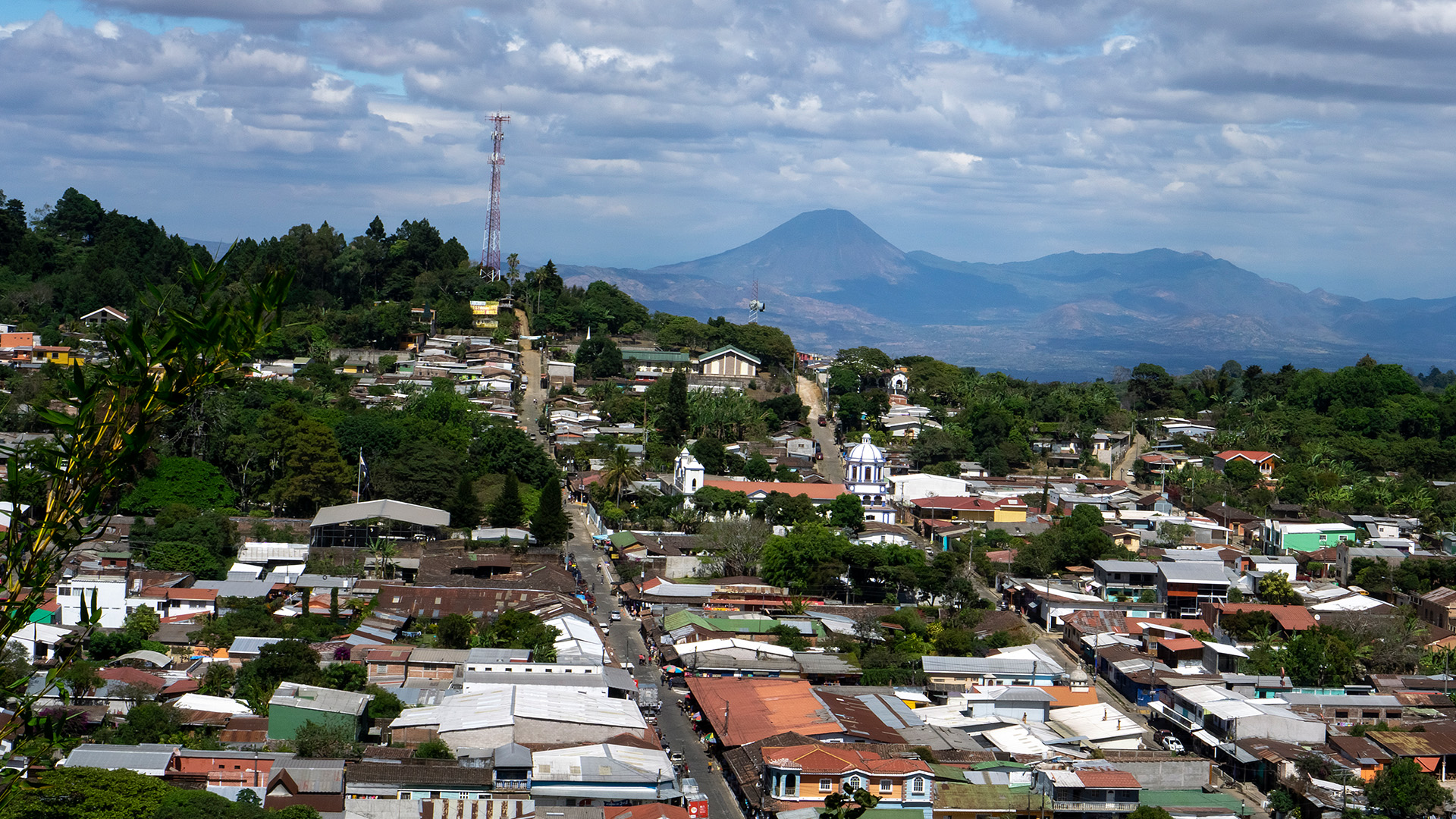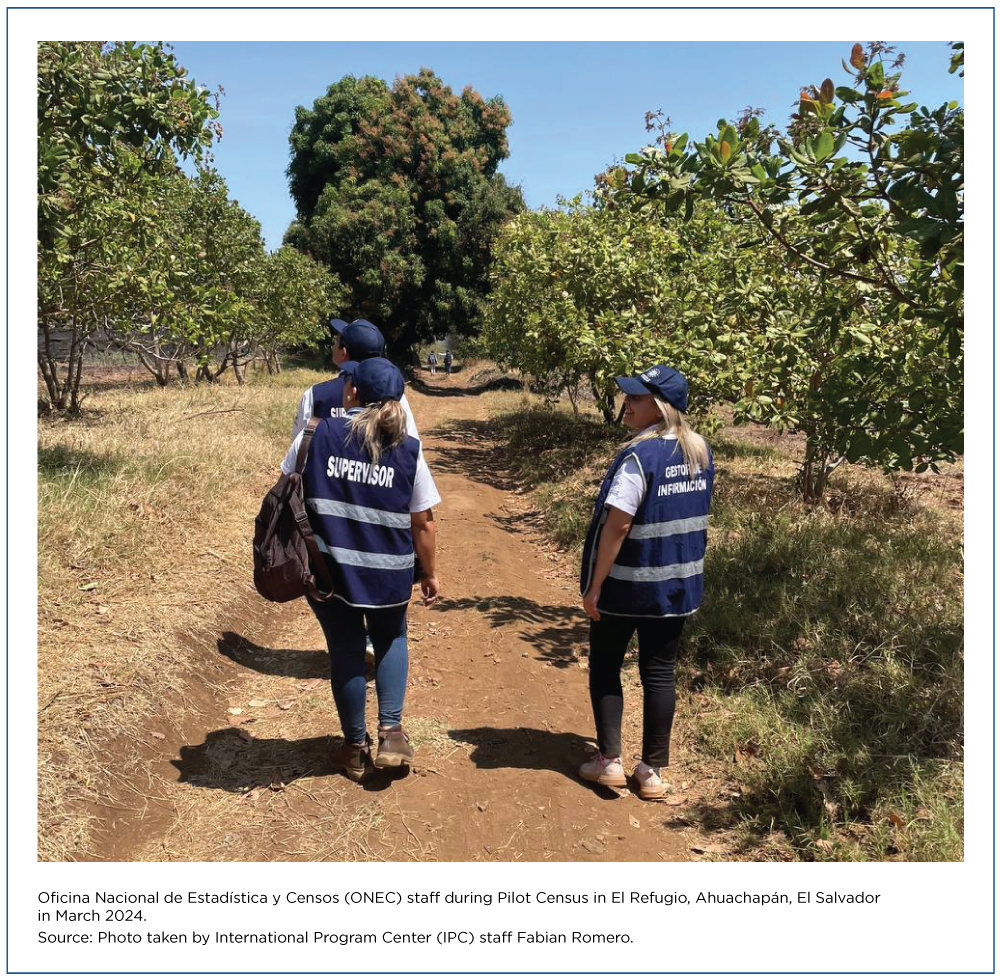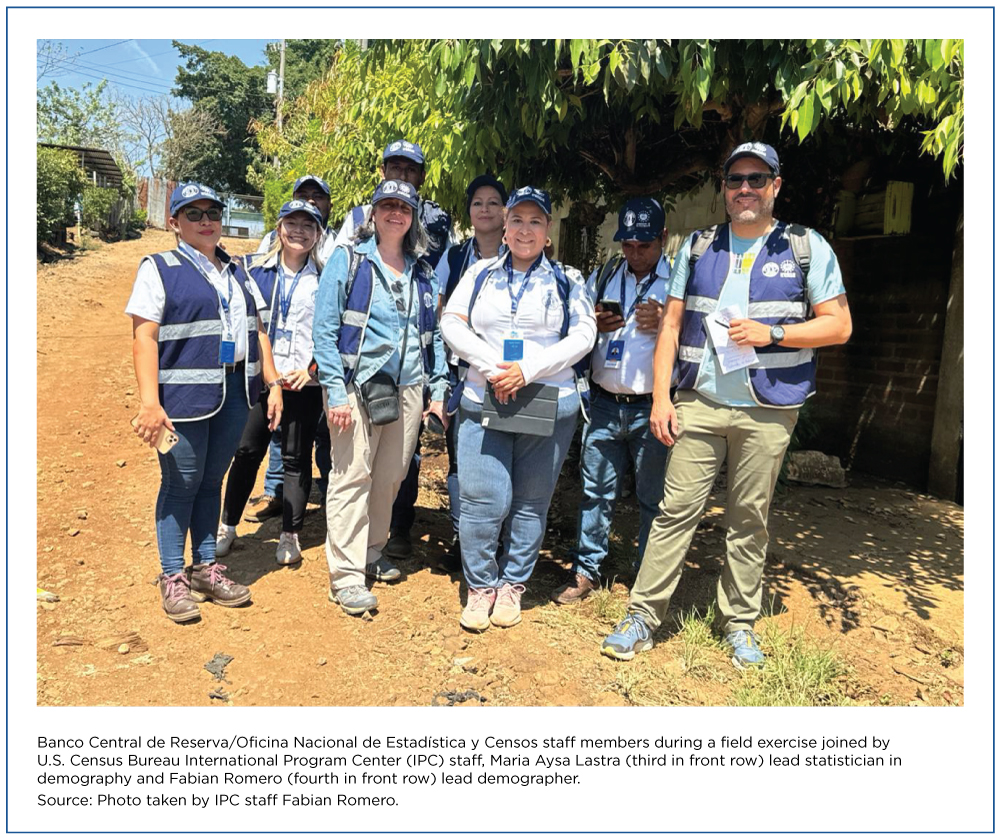U.S. Census Bureau’s International Programs Center Has Supported National Statistical Offices Across the World for More Than 70 Years
When El Salvador decided to conduct its first population and housing census in 17 years, the country’s census agency requested technical assistance from the U.S. Census Bureau’s International Programs Center (IPC).
The United States has conducted a decennial census since 1790 – and it’s still a monumental, ever-evolving task.
A census is typically the largest peacetime operation governments conduct to gather information about their nations’ diversity, health, wealth, education and other factors. It demands a lot of planning, resources, stakeholder coordination and political will to collect census data and disseminate the results.
Through collaboration agreements with these agencies, the IPC for 70 years has provided technical assistance to help more than 100 countries conduct censuses, manage survey operations and analyze data.
The global celebration of World Population Day today highlights the significance of population censuses.
Organizations like the United States Agency for International Development (USAID) and the United Nations Population Fund (UNFPA) recognize the importance of such data in helping to allocate federal funds and resources, plan and implement programs, and identify population in areas at risk for natural and humanitarian disasters.
Through collaboration agreements with these agencies, the IPC for 70 years has provided technical assistance to help more than 100 countries conduct censuses, manage survey operations and analyze data.
Some countries reach out directly to the Census Bureau and others do so through their USAID missions.
When enlisted to help another country with their census, the IPC uses the Census Bureau’s Tool for Assessing Statistical Capacity (TASC) to measure a country’s ability to conduct a census.
TASC helps identify areas where improvement is needed, which in turn helps justify the need for funding for training and equipment. It also provides a measure of the before-and-after results of various activities designed to boost countries’ census efforts.
The El Salvador Census
In May 2007, El Salvador’s population and housing census counted 5,744,113 million people. The IPC International Database (IDB) estimates the population of El Salvador will top 6 million people this year.
In response to El Salvador’s request, the IPC in January 2022 initiated a USAID sponsored project to not only help that country conduct its first census in 17 years but to do so 100% digitally.
A remote planning mission held amid the COVID-19 pandemic laid the groundwork for a series of 10 subsequent in-person assistance missions.
Over a period of two years, the IPC sent expert cartographers, demographers, programmers and senior managers to San Salvador to help plan the census, provide cartographic support, and develop the census questionnaire and the data collection application.
In addition, the Census Bureau provided Spanish translations of its Select Topics in International Censuses that explained how to measure various socio-economic characteristics from education and child mortality to employment and labor market participation.
Some Challenges IPC Faced
In addition to the project's typical complexities, the assistance effort was further complicated in July 2022 when El Salvador transferred its census agency’s responsibilities to the central bank.
This transition created a period of uncertainty. But later that year, the Oficina Nacional de Estadística y Censos (ONEC) was established, solidifying IPC's partnership.
Since then, the IPC has worked closely with ONEC and colleagues from the UNFPA and the Latin American and Caribbean Demographic Centre. The goal: to support development of El Salvador's computer-assisted personal interviewing application on IPC-developed Census and Survey Processing System (CSPro) software.
In March, the IPC’s Fabián Romero and Maria Aysa Lastra found that the country’s census agency applied sound logistical and management skills to their operations during a pilot census.
There can be challenges when Census Bureau recommendations based on international standards conflict with the census calendar set by a country.
For instance, the United Nations recommends a one-year gap between a pilot census and the actual census. That allows enough time to fix and address any issues identified during the pilot census, such as problems with data collection application, the questionnaire, cartography and the communication campaign.
However, El Salvador decided to conduct its census just two months after its pilot run.
To make this possible, the country’s census agency worked long hours to iron out application glitches, develop the monitoring dashboard and address other issues. It committed enormous resources to the effort, including acquiring 192 trucks and paying top salaries to attract qualified enumerators and supervisors.
El Salvador kicked off its census on April 30 with an impressive display of new hires and trucks. The census started on May 2 and was completed by June 26, 2024. Preliminary results are expected to be released as early as October 2024.
How Census Bureau’s IPC Helps Other Countries
The IPC supports a range of census operations by providing comprehensive training to its counterparts in other countries. This training, which includes both remote assistance and in-person visits, typically last from two to four weeks.
While assisting countries, the IPC has to strike a delicate balance: fully respecting the sovereign decisions and policies of the country while still fulfilling its mission to strengthen their capacity in keeping with international best practices and U.S. Census Bureau standards.
This approach helped the IPC build trusted relationships, many of which are with countries that went on to become regional census powerhouses themselves.
By the conclusion of the global 2020 round of censuses (spanning from 2015 to 2024), the IPC’s CSPro software will have helped count nearly 1 billion people around the world, including in El Salvador.
Related Statistics
Subscribe
Our email newsletter is sent out on the day we publish a story. Get an alert directly in your inbox to read, share and blog about our newest stories.
Contact our Public Information Office for media inquiries or interviews.
-
PopulationWorld Population Estimated at 8 BillionIt took 13 years for the world population to go from 7 billion to 8 billion but it will take an estimated 14 years to add another billion amid slowing growth.
-
HealthNew Data From Around the Globe in HIV/AIDS Surveillance Data BaseCensus Bureau’s database now houses 205 unique sources of data from around the world.
-
Population2020 Census Is Around the Corner but Not Just for the United StatesSince the 1930s, the U.S. Census Bureau has helped more than 100 countries around the world conduct their censuses.
-
EmploymentThe Stories Behind Census Numbers in 2025December 22, 2025A year-end review of America Counts stories on everything from families and housing to business and income.
-
Families and Living ArrangementsMore First-Time Moms Live With an Unmarried PartnerDecember 16, 2025About a quarter of all first-time mothers were cohabiting at the time of childbirth in the early 2020s. College-educated moms were more likely to be married.
-
Business and EconomyState Governments Parlay Sports Betting Into Tax WindfallDecember 10, 2025Total state-level sports betting tax revenues has increased 382% since the third quarter of 2021, when data collection began.
-
EmploymentU.S. Workforce is Aging, Especially in Some FirmsDecember 02, 2025Firms in sectors like utilities and manufacturing and states like Maine are more likely to have a high share of workers over age 55.








